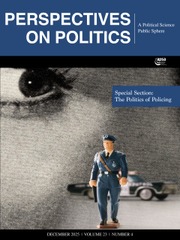Following the summer of 2020 racial reckoning, Yale University embarked on a self-reflective study of its complex racial past and its various afterlives. Headed by esteemed historian David W. Blight, the resulting publication overcomes previous attempts at telling more truthful and inclusive stories about the institution, the town of New Haven, and their entanglements with the nation’s racial past. Spanning from the university’s origins to the early twentieth century, Yale and Slavery: A History succeeds by offering a nuanced accounting.
The early chapters discuss the shared oppression, collective exploitation, and profiteering off of Native Americans and Africans that allowed Elihu Yale to endow the Collegiate School, which would eventually take his name. Here Blight and his team weave a compelling narrative that foregrounds the Yale founders’ role in land dispossession, setter colonialism, slave trafficking and the extractive use of enslaved people’s labor in defining its educational mission, faculty hiring, and student enrollments. Even with these entanglements, Yale also had a history of antislavery activism, with links to the American Colonization Society, the Amistad legal case, and the antebellum abolitionist movement. Here, specific faculty, college presidents, and alumni offer a contrasting view of early attempts to reckoning with Yale’s past. President Ezra Stiles and several Yale-trained ministers laid out the religious abolitionist arguments during the American Revolution. British occupation and Black military service for the Patriots compelled more discussions over questions of race, the prospect of gradual emancipation, and the paradox of slavery in new nation. Yet, this brief antislavery impulse was stymied at Yale by President Dwight, who embodied “a lost cause, but in other ways, he presaged proslavery, anti-Black currents that would become even more powerful in the years ahead” (pp. 113–114). Yale’s persistent connections to southern slave economies, its overreliance on elite enslaver sons’ attendance, and the presence of pro-slavery ideologues among its alumni and faculty outweighed this progressive antislavery contingent. Blight notes that the secession crisis and the Civil War, in turn, allowed for a return to more progressive presidential leadership as Yale coped with the pressures of wartime survival, including a militarized campus and New Haven community as well as the moment of emancipation. In short, the pendulum oscillation between slavery, anti-Blackness, and antiracist reckoning has depended on the leadership of Yale presidents—including the recent Peter Salovey, who authorized the working group and this resulting volume.
Confederate defeat allowed for continued haphazard reckoning with how Yale narrated and memorialized its own understanding of its racial history. While African Americans did attend antebellum theological courses, the formal admission of African American students marked an important shift in the school’s history and in relations with the Black New Haven community who supported these new additions. Despite their different scholarly pathways, all Black students shared experiences with a hostile white campus community. Some, including Edward Bouchet, John Wesley Manning, and Edward Archer Randolph, joined the alumni ranks. With the hardening of the color line, the Yale campus became embroiled in national debates over lynchings, disfranchisement, and other issues cementing Jim Crow segregation. Blight and team remind us: “In these years Yale students were the children of Reconstruction, and its enduring unfinished legacy hung all over their debates” (p. 267). Yet, interestingly, Booker T. Washington adds a complication. When he visited the campus several times between 1895 and 1915, the Yale campus community, Black staff, and the New Haven Black community embraced the African American leader as it did virulent white supremacist speakers committed to the “national culture of reunion and reconciliation that came to dominate American society after the beginning of the twentieth century” (p. 308). Ultimately, Yale leaders prioritized returning southern students to campus to capture their tuition dollars and to secure white alumni donations. The embrace of whiteness and this historic Southern constituency made the intentional forgetting of institutional racial past more palatable to the majority of Yale’s staff and students in the early twentieth century.
Interspersed between the traditional history chapters are several interludes that showcase the “extraordinary African Americans who dreamed, survived, worked, and studied at the college, and then the university, near New Haven Green” (12). After listing the known names of enslaved people connected to Yale’s founders, trustees and donors, the remaining interludes offer detailed biographical sketches of Jethro Luke, Alfred and Eliza Manning, L. W. Silliman, and the post-Civil War campus employees. And they also shed light on the diverse responses to the Birth of a Nation film. These chapter-length treatments reflect a major strength of the volume. It allows for the insertion of African American staff, enslaved and free, whose experiences would otherwise get subsumed in the narrative history. However, the organizational decision raises several questions: Why not incorporate these interludes into the broader narrative? More important, how might a Black-Indigenous framework change or challenge the white gaze of the presented narrative? Would such a framework better align itself with other publications that explore marginalized experiences at Clemson University, University of South Carolina or Princeton University? By focusing so heavily on white participants, the combination of interludes and traditional narrative begs the question of who the intended audience of this book is.
Overall, Yale and Slavery is a fine addition to the burgeoning field of Critical University and College Studies. While their narrative ends in the early twentieth century, it is refreshing that Blight and team acknowledge the need for additional volumes. This opening salvo not only lays a major foundation for Yale—but also for other institutions that are late to exploring their complex racial histories.


